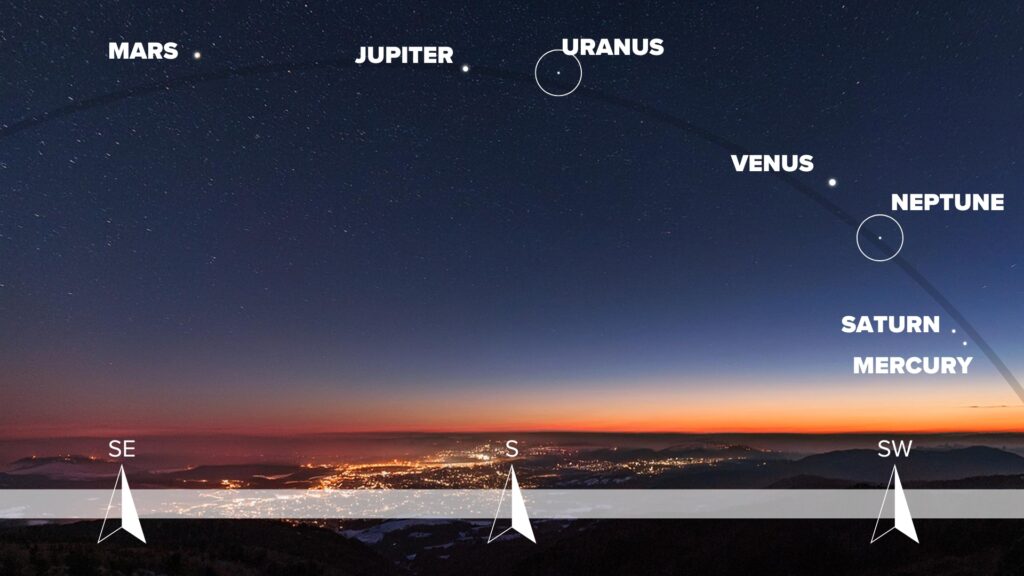Hey stargazers, find out what is happening in the February night sky.
It is a fantastic time to stargaze, as the night skies offer many exciting celestial events. Whether you’re an amateur or seasoned skywatcher, February 2025 brings an array of phenomena worth observing.
- The Winter Constellations Winter offers clear skies and long nights, making it one of the best seasons to spot iconic constellations. In February, the brilliant constellations of Orion, Taurus, and Gemini dominate the southern sky. Orion, with its famous Belt, is easily recognizable and hosts a number of fascinating deep-sky objects like the Orion Nebula (M42). Nearby, the Hyades star cluster and the Pleiades are also visible, with the latter offering a beautiful, misty look.
- The Planets align on February 4th. You may be able to see Mars, Jupiter, Venus, and Saturn. Act quick because Saturn will fade from site later in the month.
- The Full Moon February 2025 features a “Snow Moon” on February 15, named for the time of year when heavy snowfall typically occurs in the northern hemisphere. The full moon will be visible across the world and is an excellent opportunity for lunar enthusiasts to observe its surface in detail, especially if you have a telescope. The full moon also influences the visibility of fainter stars and deep-sky objects.
- Meteor Showers While February doesn’t bring a major meteor shower like the Geminids or Perseids, keep an eye out for occasional sporadic meteors. If you’re lucky, you might catch a glimpse of a “shooting star” as Earth passes through leftover debris from comets.
Final Thoughts February is the perfect time to give that special friend or loved one their very own star from Name a Star. Stargazing in February 2025 is sure to be a rewarding experience with a little patience and clear skies. So, grab a blanket or telescope, head outside, and immerse yourself in the wonders of the cosmos!

